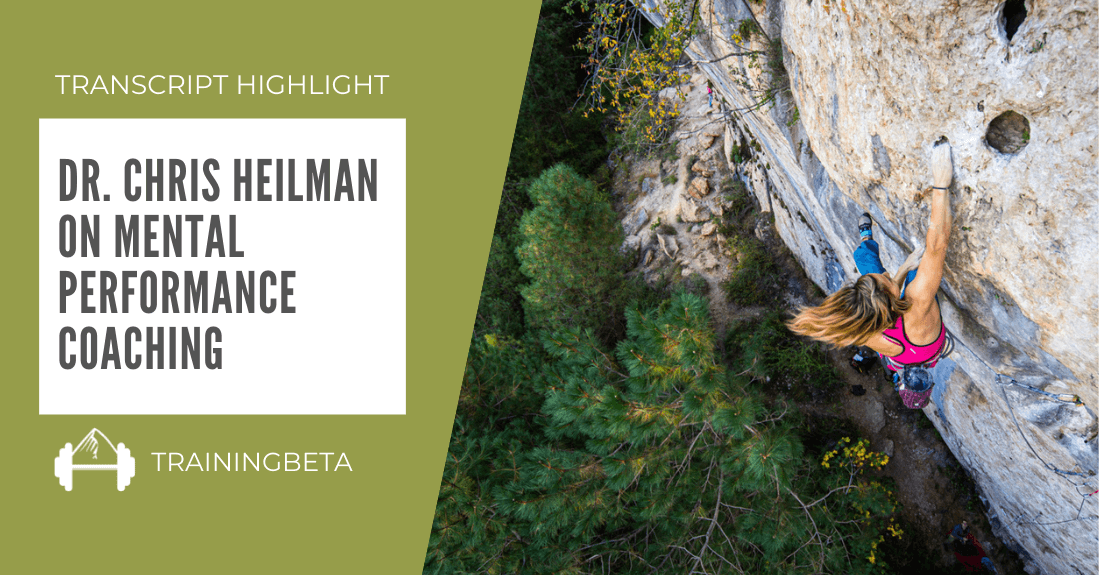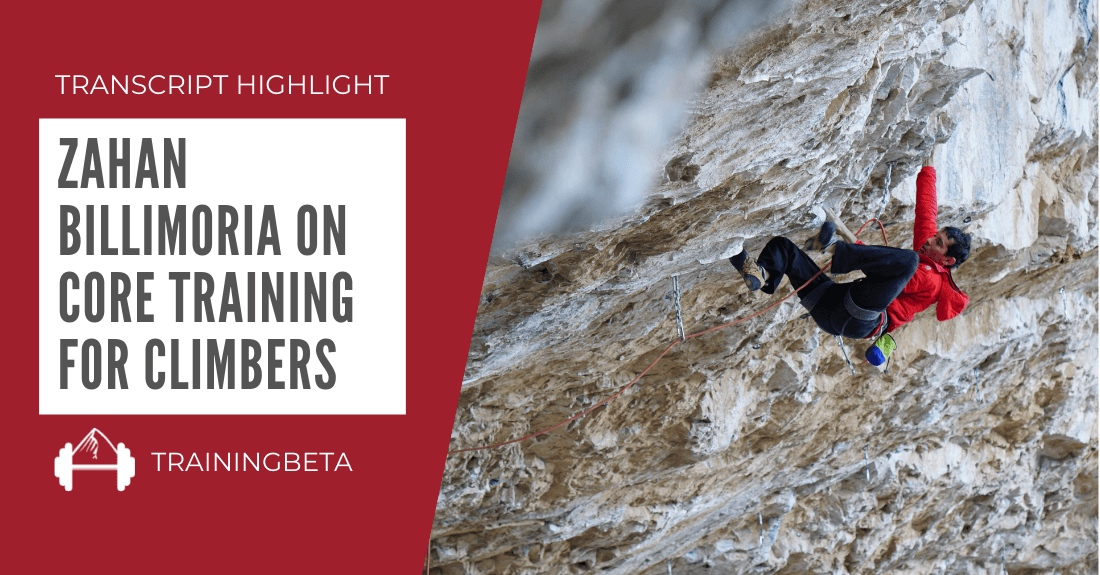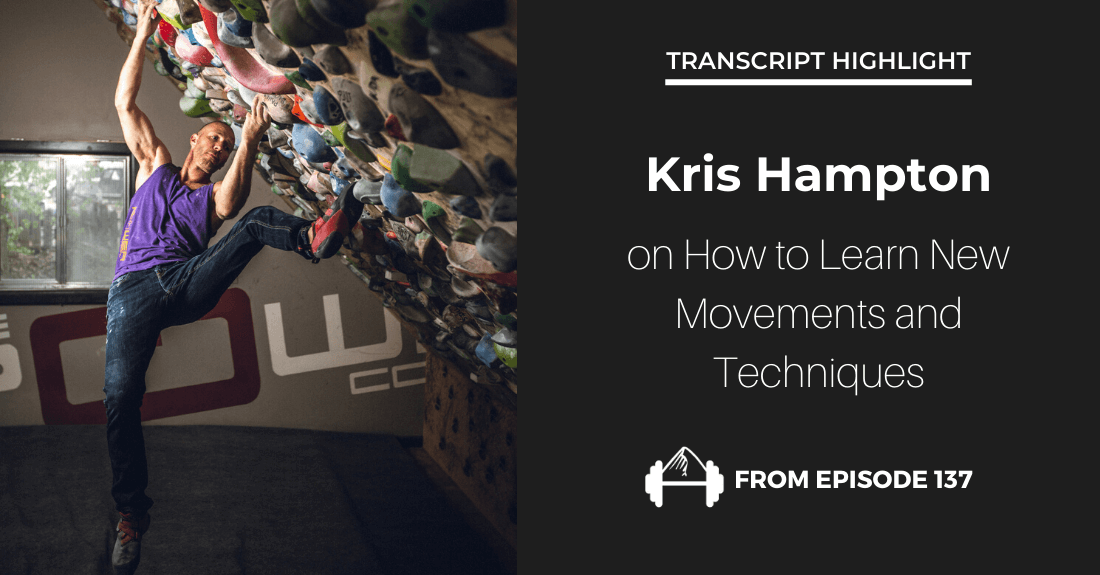As climbers, most of us have dream climbs we’d love to send someday in the future. Whether they are life-list routes, boulders, or big walls, these dream lines can be great motivators for continual improvement. The idea being that one day you want to be good enough to tick one of these objectives.
However, things can get tricky when it comes to actually planning out how to work towards such a lofty goal. The magnitude of the task can start to feel overwhelming and you can be left feeling like you don’t know where to start. The key is to set more achievable intermediate goals. These more achievable objectives help keep you motivated and build towards your larger objective.
To show this process in practice, here’s an excerpt from TrainingBeta Podcast 131 with James Lucas where he describes how he set a series of progressively easier goals to help him works towards sending his bigger objective, Yosemite’s Midnight Lightning V8.
When you read this excerpt, pay special attention to how James made some of his goals so easy it was almost impossible to fail. They may have been as simple as showing up but achieving them built confidence and moved him towards his larger objective. If you like what you see, be sure to check out the full episode/transcript and the article James wrote about his Midnight Lightning training: James Lucas: How I Trained for Midnight Lightning

James Lucas on Using Intermediate Goals
26:13
James Lucas: I set myself up with a few goals. I wanted to do Midnight Lightning so I would do 10 V8s. Another goal that would help me get there is if I fail on the V8s I could always just try and do 10 days of alpine bouldering. That’s easier because I just have to show up. For me, sometimes that’s the hardest part, just getting there. Once I’m there I’m like, ‘Oh, I’m here. I’ll try my project since I’m here or I’ll do something else because I’m here,’ and that helps my climbing.
Neely Quinn: It’s interesting because your first goal was lofty and the second one was just about motivating yourself. Either way you were setting yourself up for success. Even if you failed on the first goal you could still attain the second.
James Lucas: Right. Exactly. Each goal would get smaller and smaller and that really helped me. I feel like that was the biggest part of my training program. It was like, ‘Okay, it’s 4:00, I’m done with work, I guess I need to go climbing.’ Then it would be like, ‘I should go to the Park.’ I’d drive up there and do the hike and at the very least I’m hiking. Then it’s like, ‘Well okay, I’m at the boulder. I might as well climb.’
I had this initial goal of doing 10 alpine days and I did that pretty quick so then I was like, ‘Oh, 30.’ Then at the end of the season, I ended up doing 50 days of bouldering in just Rocky.
Neely Quinn: That’s a lot of days.
James Lucas: Yeah, it was a lot. I got kind of burnt out at the end.
Neely Quinn: In those 50 days what did you accomplish?
James Lucas: I think I did six V8s, I did three or four V7/V8, and I climbed around 10 or 11 V7s. I built a pretty wide pyramid.
Neely Quinn: I just want to reflect. In the 14 or 15 years up to that point you had done 3-4 V8s, 10 V7s, and 20 V6s. In this one summer you did six V8s, three V7/8s, and 10 V7s.
James Lucas: Yeah, that sounds about right.
Neely Quinn: That’s pretty huge and it seems like maybe, and I’ll ask you: is it just because you put the time in?
James Lucas: Yeah, I would say that’s the biggest part of it. Through my climbing I’ve noticed, not only in myself but in other people, the people who put the time in and put the work in get better at whatever they’re doing. The more you commit to it the more you’re going to improve.
Neely Quinn: The 10,000 hour rule. You put approximately 10,000 hours just into hiking. [laughs]
James Lucas: [laughs] Yeah, possibly. I definitely wore through my approach shoes. Even if you’re doing the wrong training program or something that doesn’t work, the fact that you’re out there doing it is going to make you better. To some degree there’s this placebo effect where if you think you’re putting energy towards improving at your project or improving at your goal, you will.
Neely Quinn: So it’s both a placebo effect and just the practice on the wall?
James Lucas: Yeah, just the practice and getting better at those skills. Because I had a short time frame to do Midnight Lightning, I got better at sending stuff quickly, which is hard.
Neely Quinn: That’s what I was going to ask you: what did you learn up there?
James Lucas: I kind of learned how to project a boulder problem. It’s easy to think about a route project, like where the clips are and stuff, but on a boulder problem project it’s like: where is the crux move? How can I do this one move? What’s the most efficient way to do this one move and doing the move before it to get into it? Linking sections and then figuring out what the best conditions are to climb stuff in.
Full Episode/Transcript: TBP 131: James Lucas on Improving His Bouldering the Old Fashioned Way

(photo courtesy of Nina Williams)
Other Articles You Might Like:
- Remy Franklin: A Better Way to Set Your New Year’s Climbing Goals
- TBP 112 :: Mina Leslie-Wujastyk on Overcoming Fears and Setting Big Goals
- TBP 096 :: Sports Psychologist Chris Heilman on Imagery and Setting Realistic Goals
- James Lucas: How I Trained for Midnight Lightning





Leave A Comment